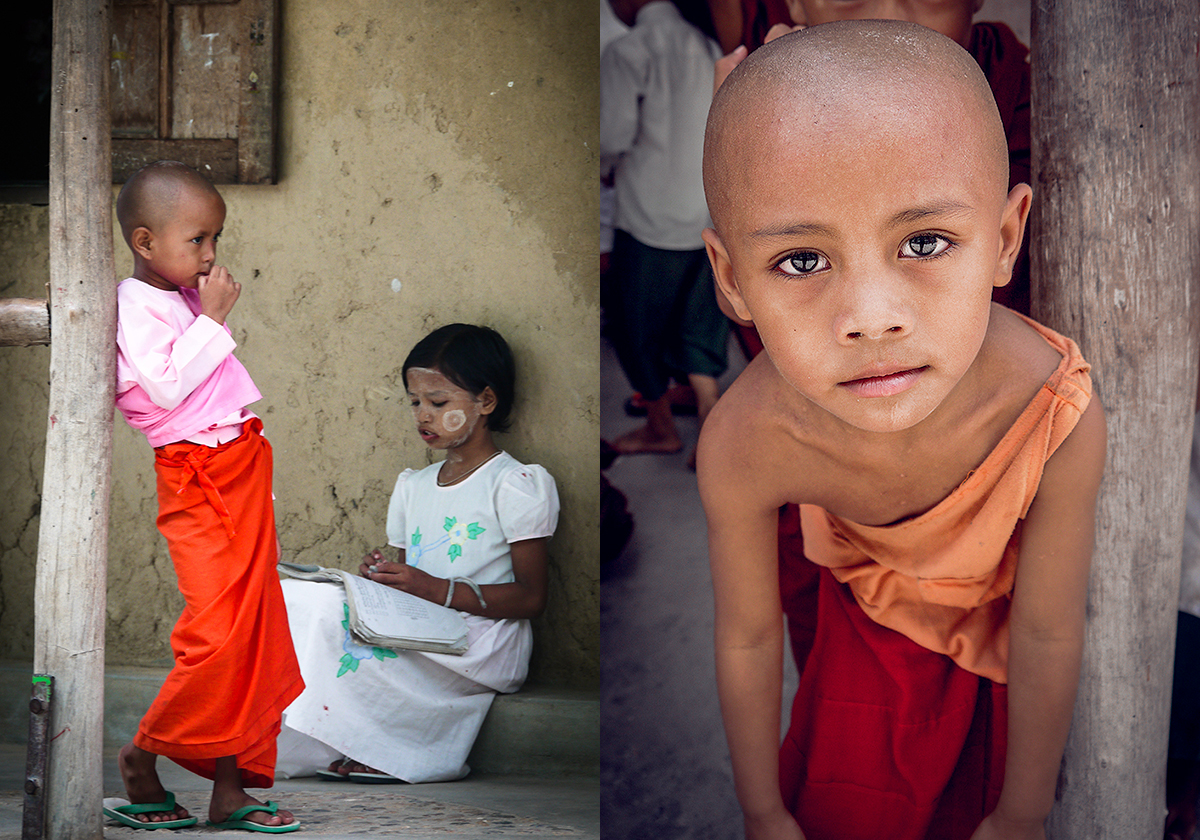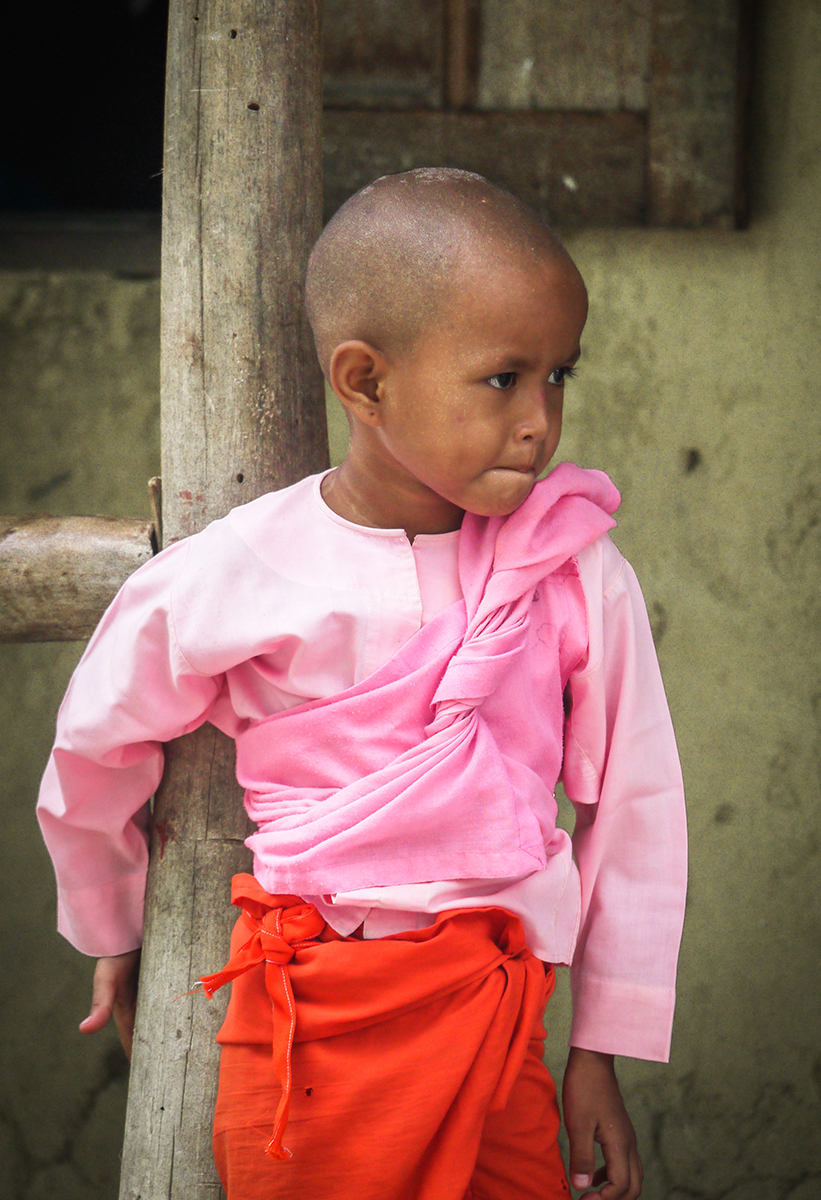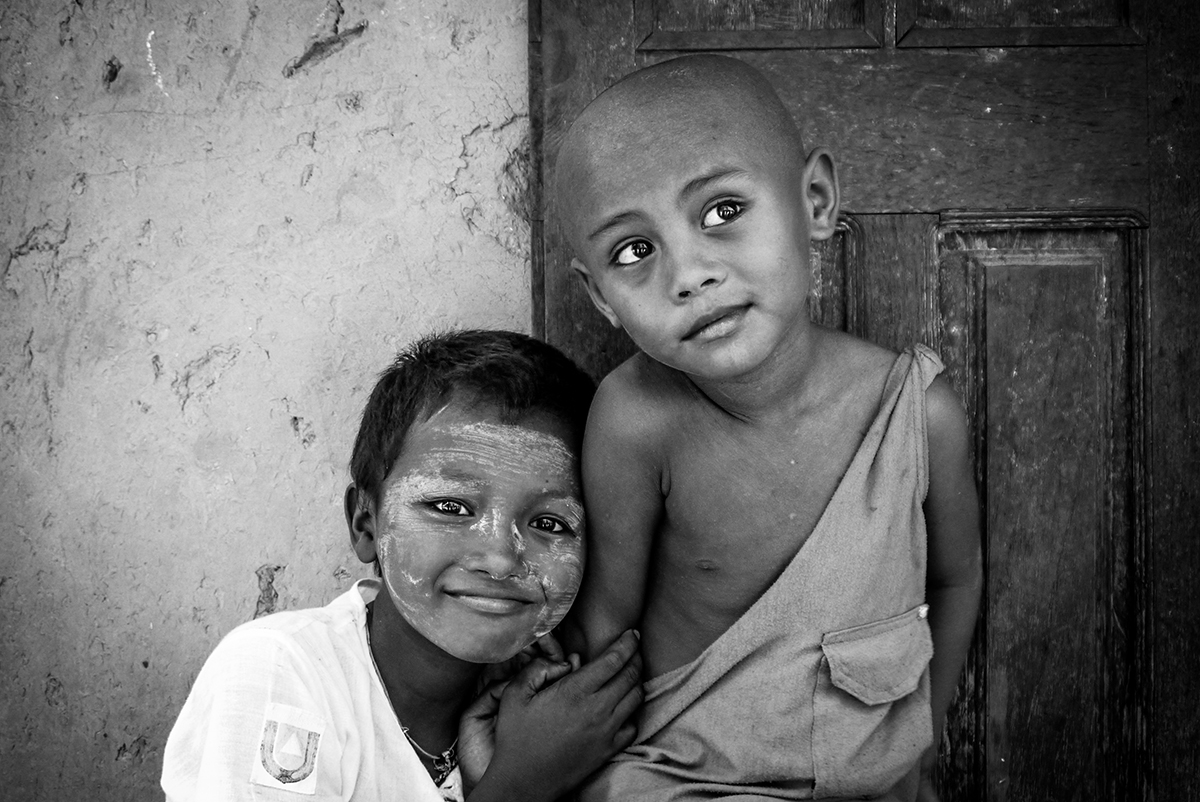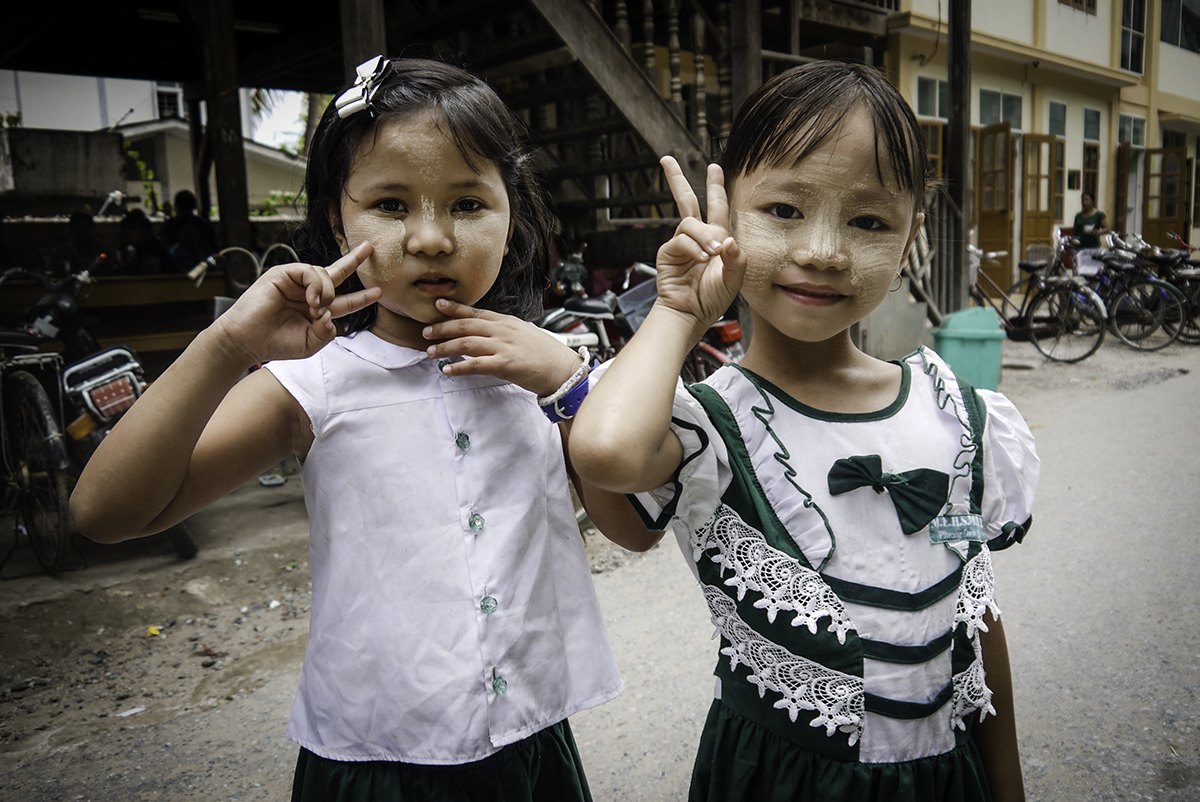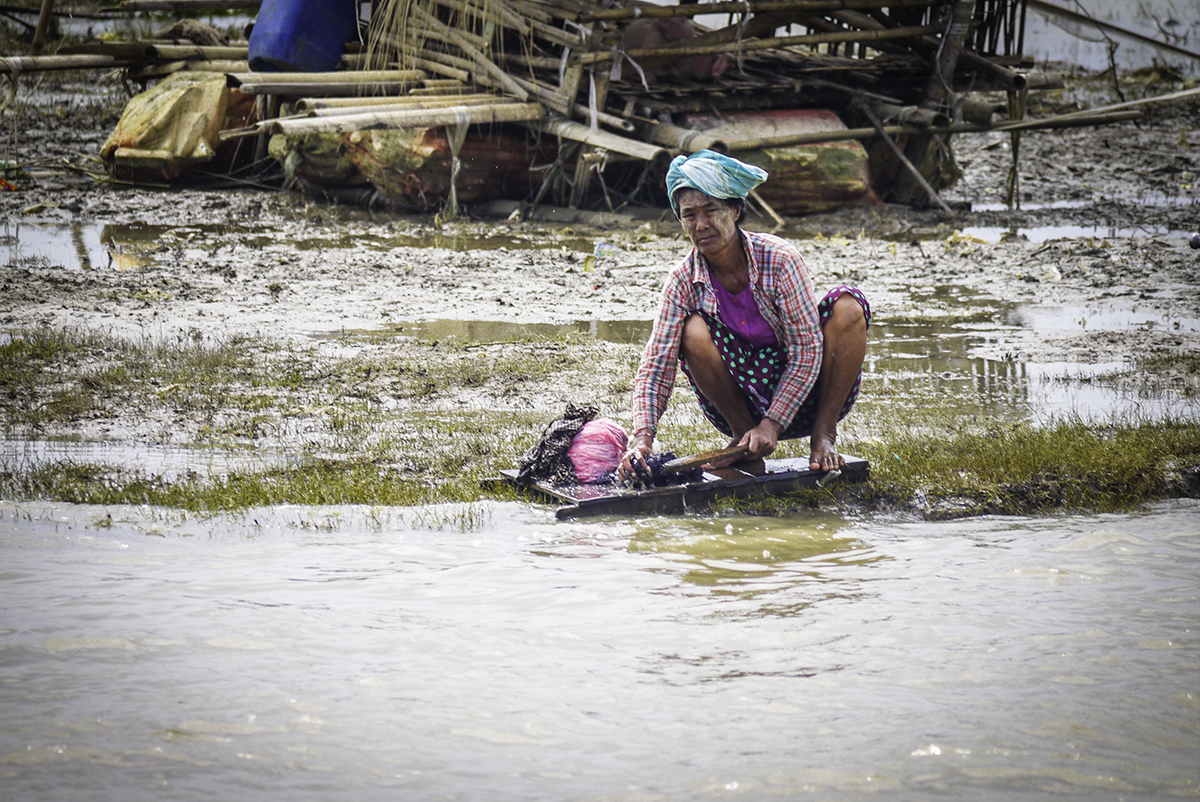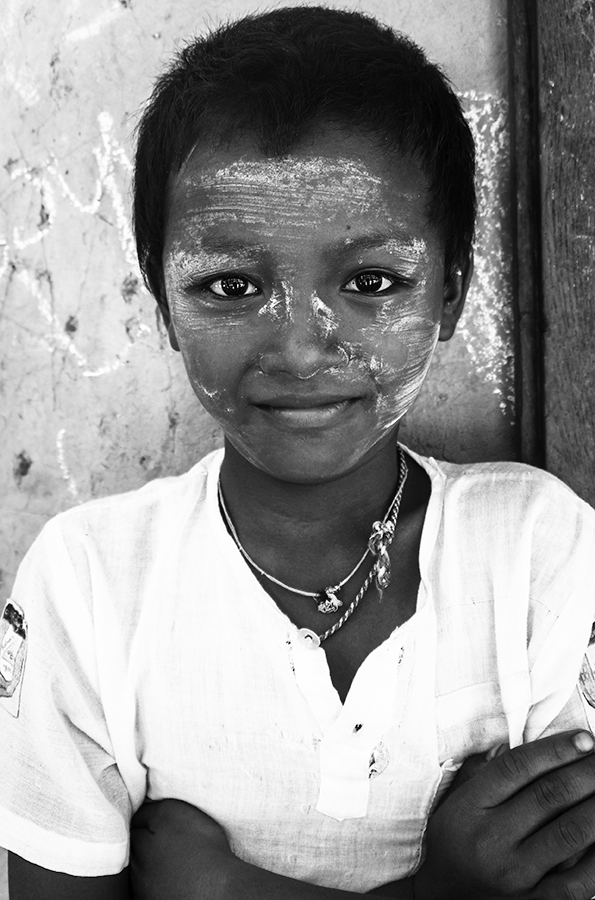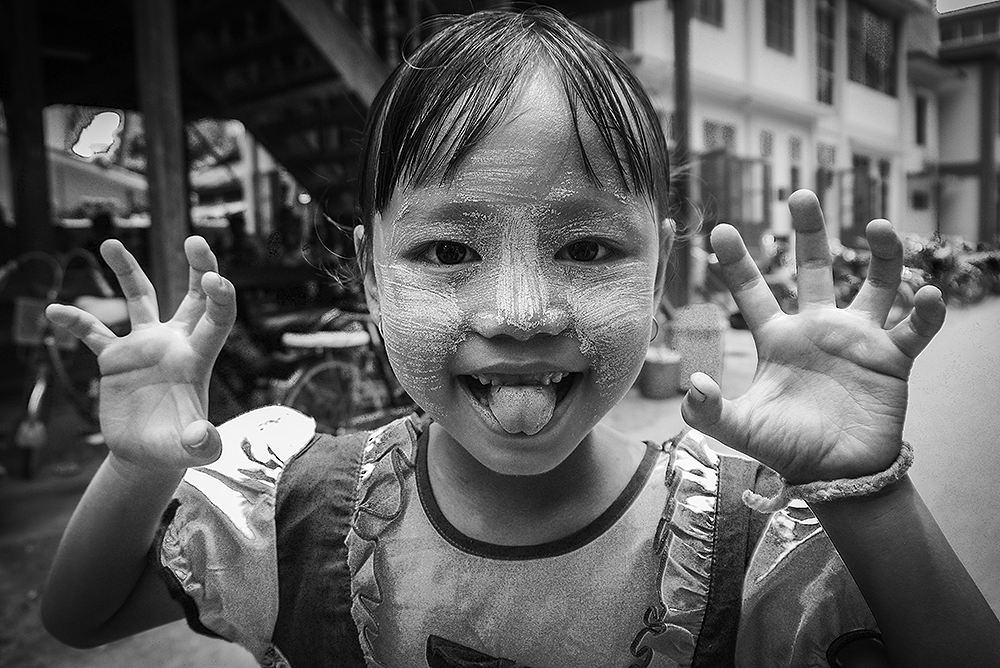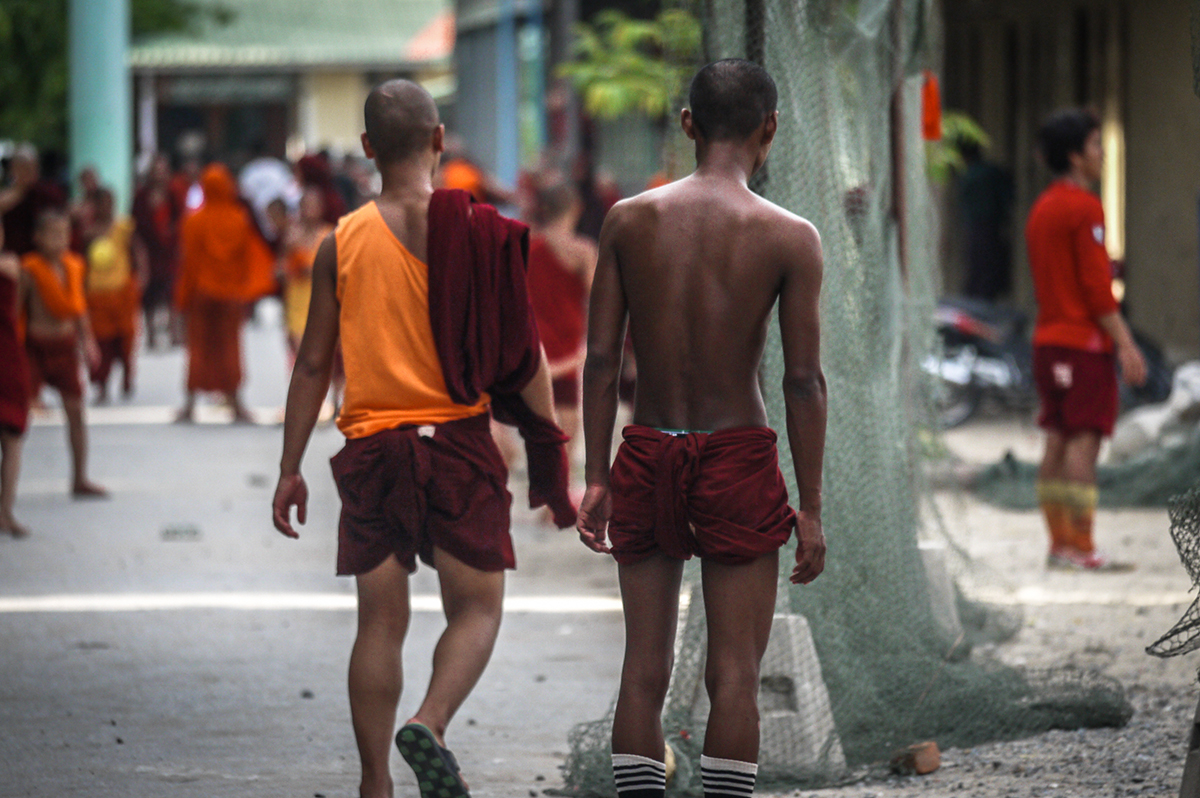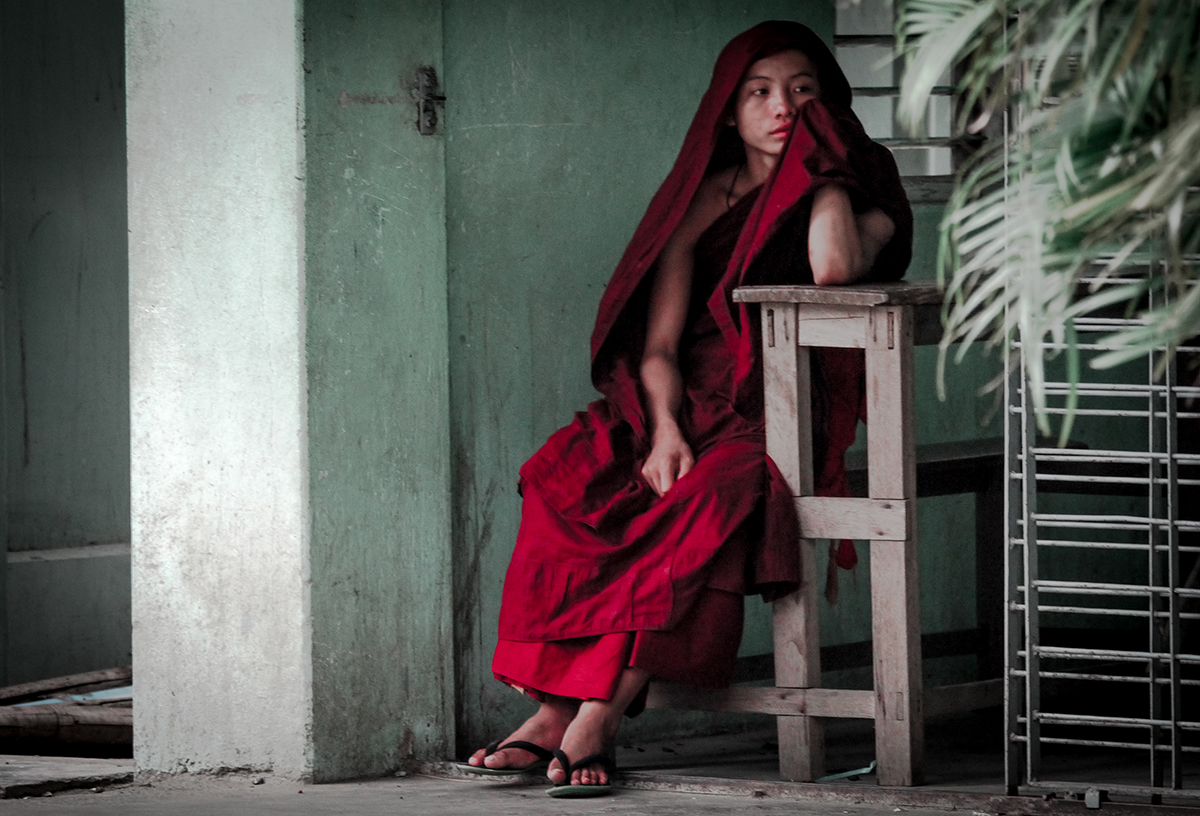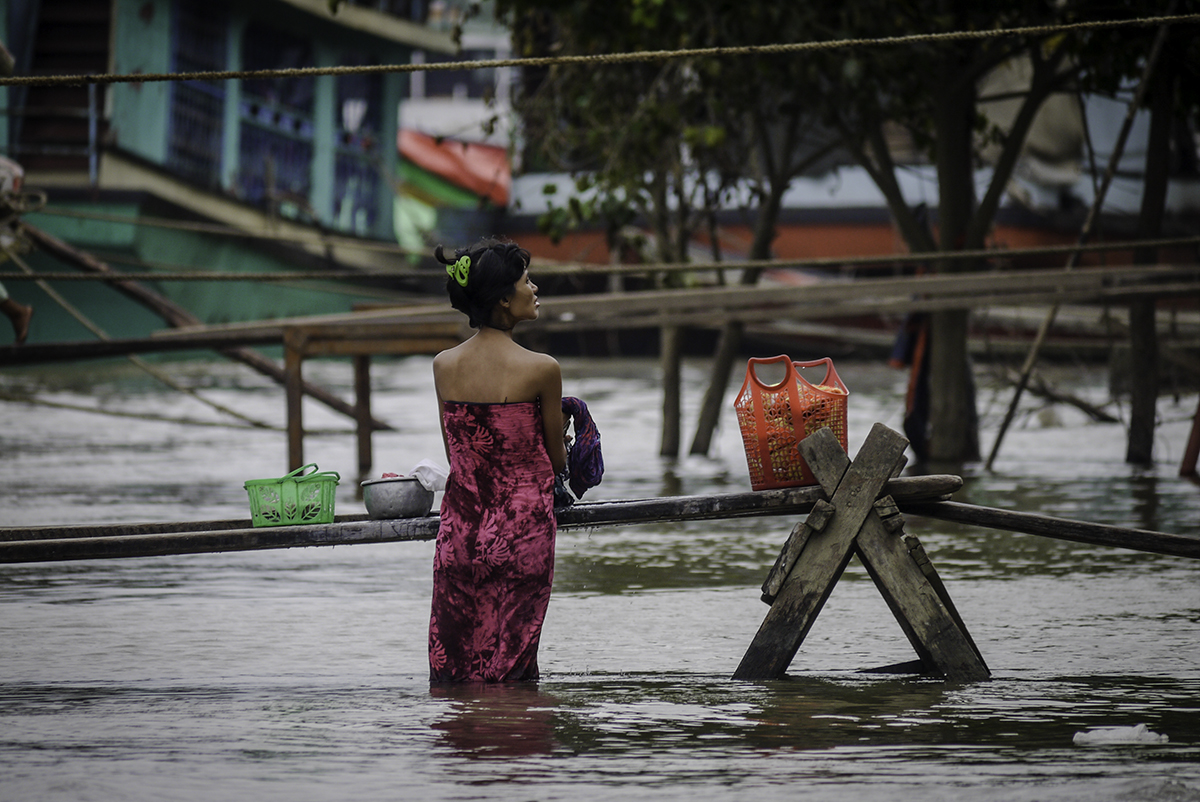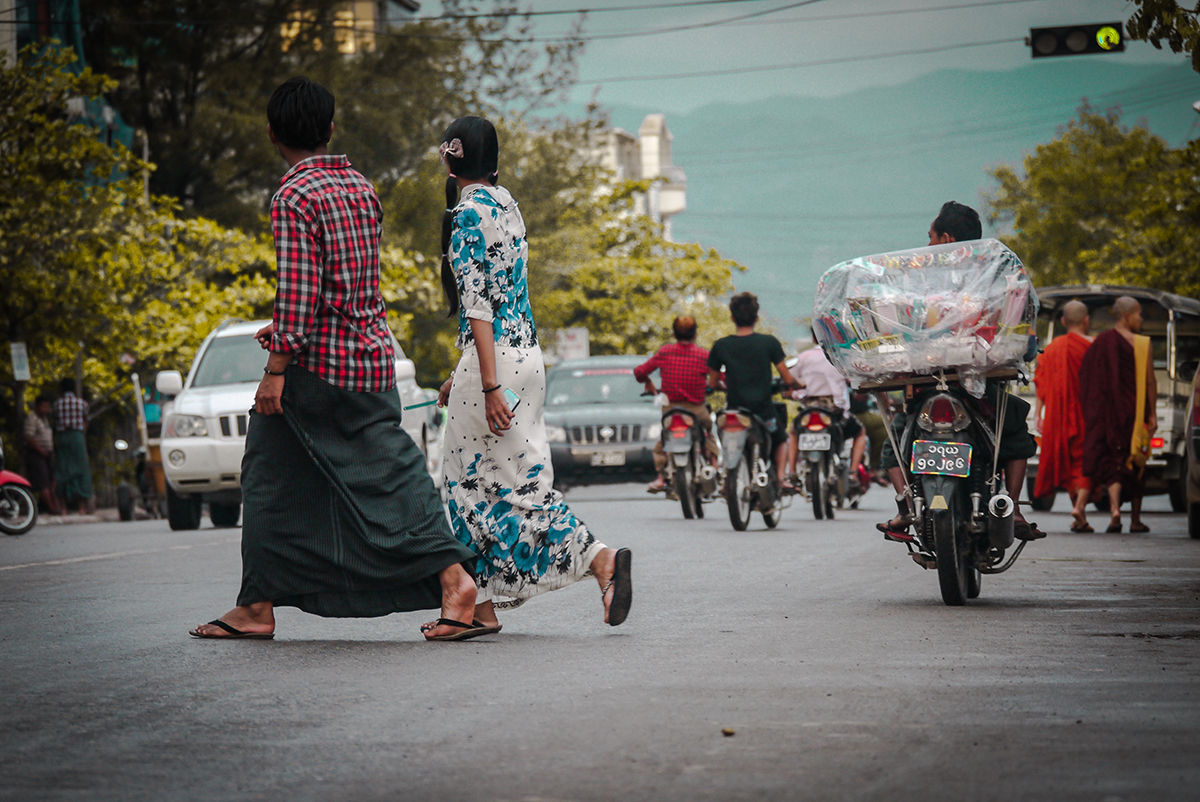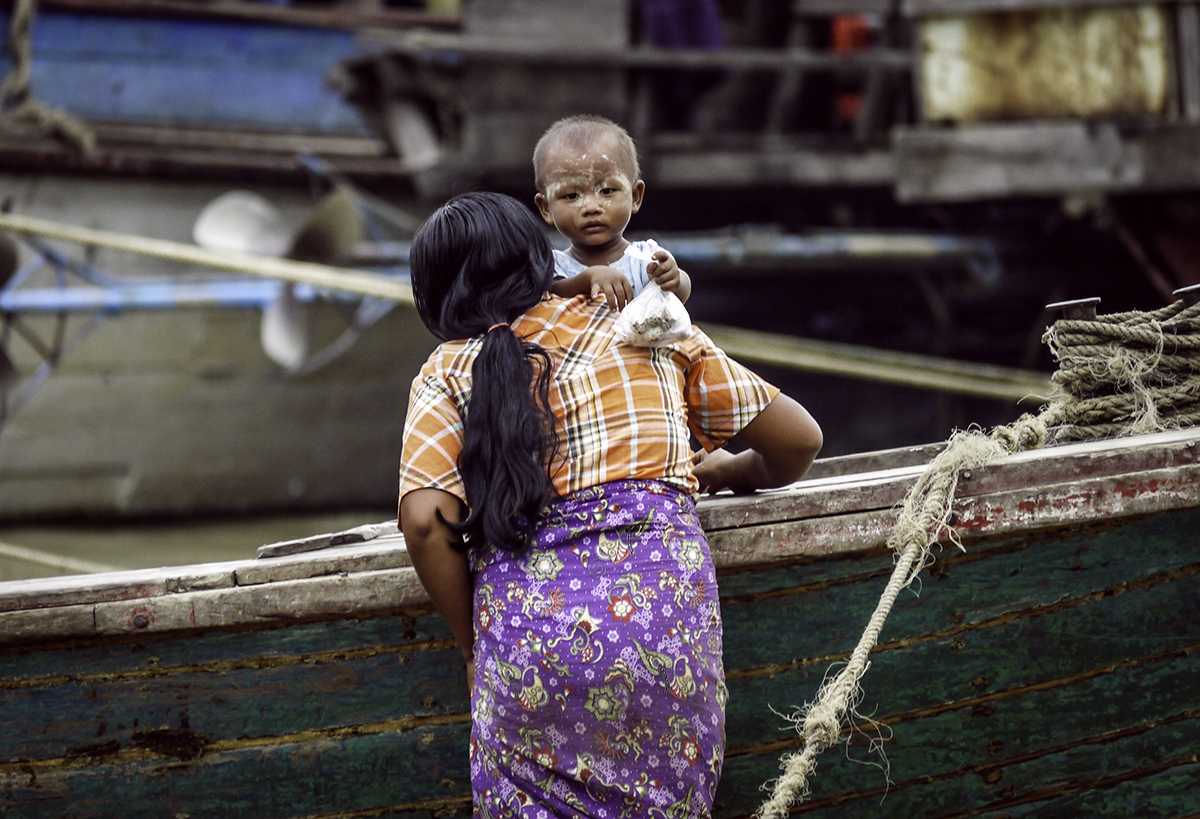Wandering Story: Myanmar – First Impressions
August 6, 2016
The Green Lion
NANSHE, Mandalay, Myanmar — Barefooted and beamingly, the students line up for their morning assembly – the novice monks and thilashins walk briskly into line – they have just finished their daily round of alms collecting and will soon be off into their classrooms alongside fellow classmates. I gaze wide-eyed at their quintessentially pink and saffron robes as they run up the stairs alongside hundreds of other children wearing their customary dark green longyis and crisp white shirts.
Over 6,000 children from different backgrounds attend this peculiar monastery school in Northeastern Mandalay founded in 1993 by Ven: U Nayaka B.Sc & Ven: U Jawtika B.Sc. The school’s aim is to provide free healthcare and education (from kindergarten through high school) to over 6,000 students as well as act as a home to over 1,000 children, including novice monks, the children who lost both parents, and natives to mountain hill tribes.
The public education in Myanmar is in crisis – the teachers are often untrained and most families find themselves unable to afford to send their children to school. Monasteries still retain their traditional role as providers of education and health care for the population, often becoming the only option available to receive a good education free of charge.
At break time, I spot thilashins and hill tribe children playing cards together – there is no segregation and that’s something that I have never seen before. I look towards the opposite side of the crumbling green building to see students enjoying a daring football match with the novice monks.
Lately, I feel really heavy – I have been carrying the weight of a million thoughts and to-dos, as if I have been going through the motions of a restless life without really feeling it. As I walk past a few more students amidst the adobe classrooms on my way to the unpainted four-storey building that is my temporary residence, I am greeted with smiles and sweet “hellos” from the students. Suddenly the chaos in my head ceases.
The day I arrived here, I made my way to the monastery on a public taxi. The thirty-minute drive took me through devastated communities struck by heavy rains. Houses like sinking ships filled with forgotten tarnished tales and generations lost. The now houseless residents sitting river-sided under made-up tents staring wistfully at the barely-to-be-seen tin rooftops of their long gone homes lost to poor infrastructure make me realize the smallness of my problems.
In the evening we chat with Tony, a 19-year-old novice who will soon advance and become a monk (when he turns 20). He speaks to us in a broken English and tries to teach us some Burmese. I laugh when I realize how wonderful it is to be able to have a casual conversation with people from such different backgrounds. I used to read about Buddhist monks in geography books when I was in primary school and it all seemed so distant. Yet here I am a decade later, hanging out with one like it is nothing.
I spot ornamented faces by circular and linear patterns. I had seen them before when travelling on a decaying public tuk-tuk in the Mae Sot area in Thailand earlier this year. The vehicle was filled with Burmese refugees escaping from their turmoiled homeland.
I ask Monica, who works at the school if there is a meaning to the patterns and she explains it is thanaka, a cosmetic paste made by grinding the bark and roots of certain trees with water. The cream has been the secret of Burmese beauty for over two millenniums.
In the afternoons, the novice monks residing at the school gather to play sports together. They go about shirtless and tuck the lower parts of their robes at the top by folding them towards the front and passing them up between their legs and up to their waist to create a form of shorts. This is an unusual sight but I am pleased to see that, despite it being a monastic school, the rules towards the novices are not as strict as they would be at a regular monastery – at the end of the day they are children and teenagers just wanting to enjoy themselves.
Buddhism feels different here than in other countries. This was made most noticeable when realizing how much respect there is towards monks. These “sons of Buddha”, as they are regarded as by the Burmese, have historically been leaders of protests, including that against the British colonization and later on, military dictatorship. In fact, in 2007, there was a revolution called the “Saffron Revolution” – the name coming from the color of the robes worn by Burmese monks – triggered by the government removing subsidies on the price of fuel. Monks here are seen as historical heroes, having led resitance to the junta, spreading pro-democracy and slowly bringing peace into their country.
Jeans are a rare sight and there is a preference towards traditional attire. Men are seen wearing ingys in dark colors brocaded with bright ones. In the mornings you’ll see the women sitting cross-legged on bamboo mats sewing and stitching gorgeous garments or walking to bazaars with fruit baskets on their heads wearing shuttle-woven silk dresses that vitalize the streets of cities with colors.
I see influences from the West slowly creeping in. Perhaps we are the last lucky ones who will get to see the real rawness of former Burma. Tourism grows year by year, and even though that might bring a lot of positiveness, there will also be downsides to it.
My impressions on Myanmar have left me humbled. I believe the most important thing one must keep in mind before visiting this untouched country is to do so respectfully and gently. Remember that Myanmar was a country that remained closed up to the rest of the world for a long time. While here, don’t look down on people whose lives, though materially poor, are rich in communal ties and ways we are not fully able to appreciate. Forget what you’ve read about the country and its government and rather focus on getting to know the people, the hospitality, and the rich culture it has to offer, which will allow you to fully enjoy this wonderfully misunderstood treasure of a country.
